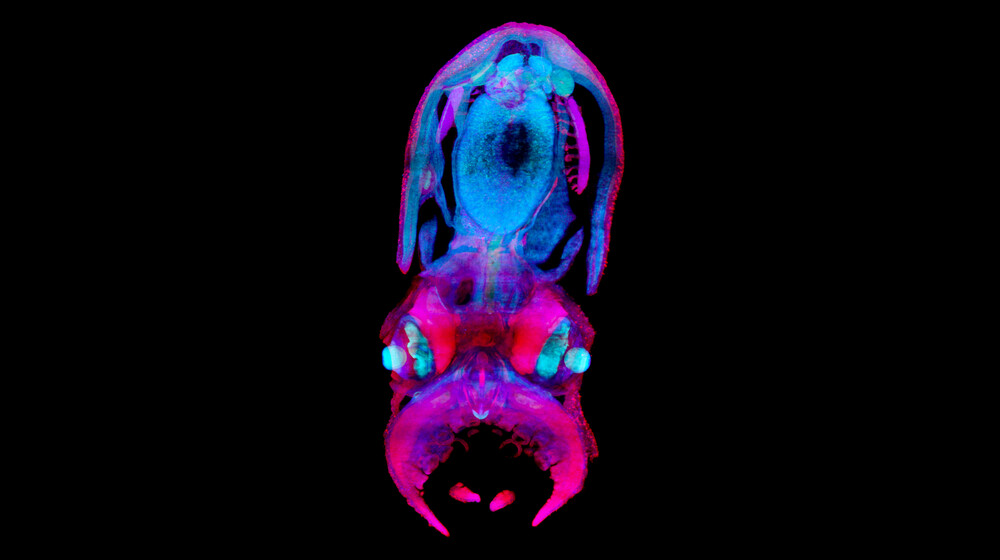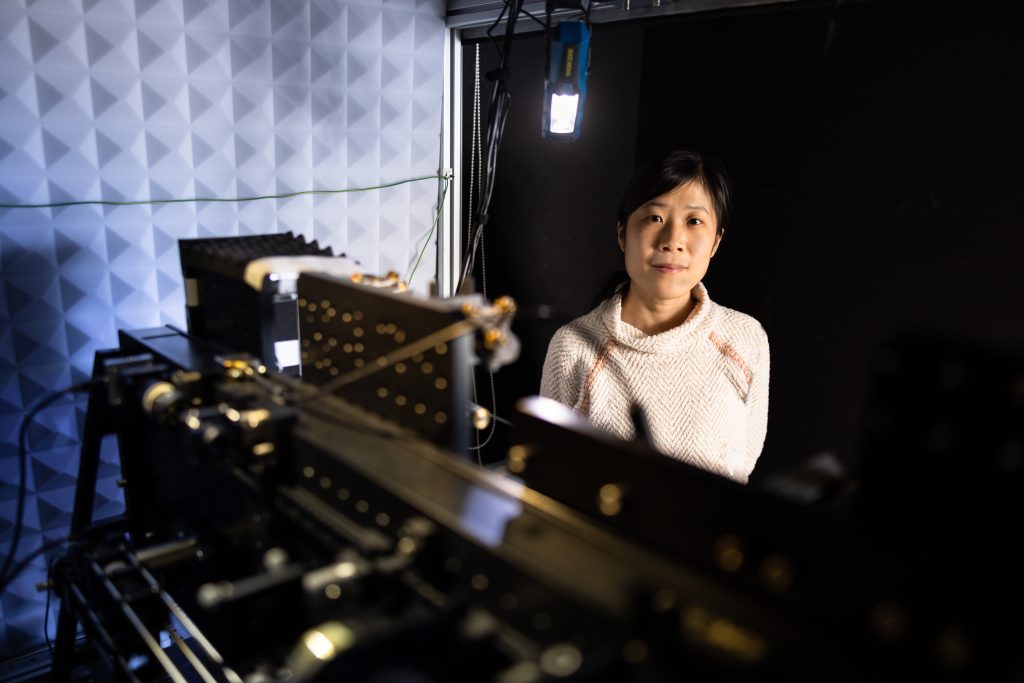
More EMBL Service Highlights
Whether it was chemical biology, multi-omics, gene editing, X-ray beamlines, or myriad microscopy services, EMBL’s core facilities and services supported the advancement of molecular biology during an active 2021.

Molecular biology at the frontier hinges on having the tools and talent to probe samples in unprecedented ways. It also means having the foresight to rethink whether and how those tools could be improved. This approach raises the level of research at EMBL and the broader scientific community too.
Here are a few more examples of EMBL scientific services taking the lead in 2021.
EMBL Hamburg researchers investigated the neurotransmitter transporter GlyT1 — findings that can provide new insights into treating genetic or psychiatric disorders. “For challenging projects like this, we are happy to put the methodological expertise of our staff to work and to make full use of the technological capabilities of our beamlines and sample preparation facilities,” said Thomas Schneider, Joint Head of Research Infrastructures at EMBL Hamburg, about the GlyT1 study. “The high-intensity microfocused beam produced by the PETRA III synchrotron on the DESY campus and the versatile high-precision diffractometer that was developed in a collaboration between EMBL Hamburg, EMBL Grenoble, and ARINAX were key for this project.”
EMBL Grenoble scientists further improved the CrystalDirect technology that had been created there only five years previously. The new additions allow scientists to automate sample preparation. Researchers can now apply this technology to membrane proteins, which offers a new opportunity for high-throughput drug discovery. The MASSIF-1 beamline run by experts at EMBL Grenoble in collaboration with colleagues at the European Synchrotron Radiation Facility (ESRF) will receive a robotic addition to realise this new potential in 2022.
The Proteomics Core Facility enabled EMBL scientists to better understand how Salmonella hijacks host cell machinery to promote its own growth and reproduction. At EMBL Heidelberg, scientists uncovered new details of this unusual survival strategy. Analysing protein interactions in Salmonella-infected cells, they identified which host cell pathways and bacterial ‘effector’ proteins the bacterium uses to commandeer cell nutrients that allow it to thrive.
EMBL’s flow cytometry facilities in both Rome and Heidelberg continued to adapt to an increasingly multidisciplinary environment, one that will begin exploring living systems in their natural context. That means expanding training and collaboration and being prepared for increasing numbers of researchers with work that goes beyond simply analysing and sorting human cells.
At EMBL Barcelona, the Mesoscopic Imaging Facility (MIF) helped in studying a unique feature in octopi: Kölliker’s organs. These structures, whose function is unknown, are present in embryos but disappear before adulthood. With partners from the Institut de Ciències del Mar at CSIC in Spain, MIF’s light-sheet microscopy helped obtain a clear picture of Kölliker organ distribution on the skin’s surface, allowing a view of the entire sample and preserving specimens for future observation.

“The crystals were very small and difficult to image. We chose to measure them at EMBL Hamburg’s beamline P14, which is well suited for challenging experiments like this one.”
— Azadeh Shahsavar, Assistant Professor at Aarhus University; Postdoc at EMBL Hamburg, 2016–2019
Explore more 2021 EMBL experimental services highlights:
References
Shahsavar A et al. (2021). Structural insights into the inhibition of glycine reuptake. Nature, 3 March 2021. DOI: 10.1038/s41586-021-03274-z
Walch P, Selkrig J, et al. (2021). Global mapping of Salmonella enterica–host protein–protein interactions during infection. Cell Host & Microbe, 7 July 2021. DOI: 10.1016/j.chom.2021.06.004
Villanueva R, et al. (2021). Born With Bristles: New Insights on the Kölliker’s Organs of Octopus Skin. Frontiers in Marine Science, 10 May 2021. DOI: 10.3389/fmars.2021.645738

